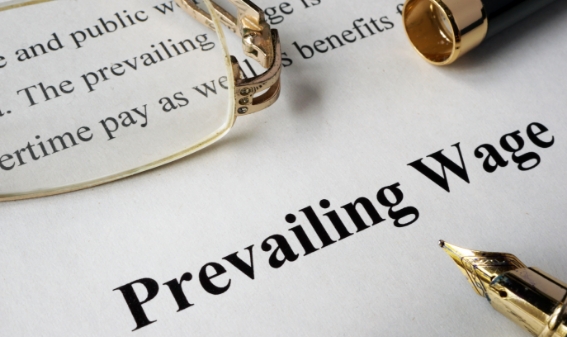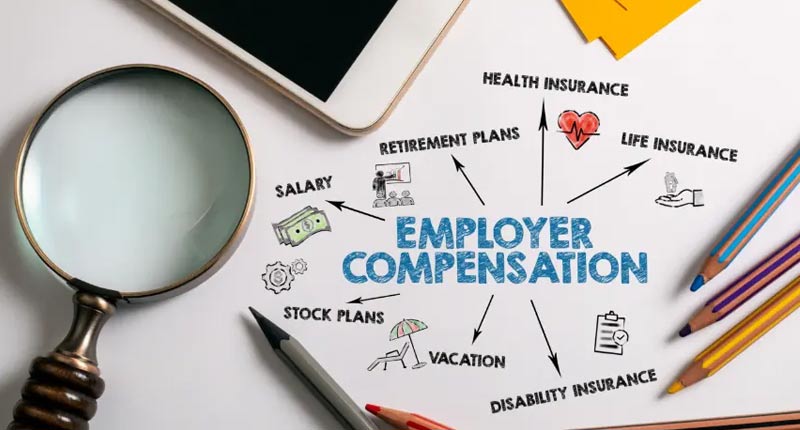Your Go-to Guide to Prevailing Wage in New York
Everything you need to know about Prevailing Wage in New York, presented by Replicon, the Time Intelligence® platform

- Understanding Prevailing Wage in New York
- Job Schedules
- Applicability and Coverage of Prevailing Wage Rate
- New York Prevailing Wage Rates
- Compliance Requirements
- Benefits and Deductions
- Employee Rights
- Enforcement and Penalties
- Latest Updates in New York State Prevailing Wage Rate Laws
- Conclusion
- Frequently Asked Questions (FAQs)
- Understanding Prevailing Wage in New York
- Job Schedules
- Applicability and Coverage of Prevailing Wage Rate
- New York Prevailing Wage Rates
- Compliance Requirements
- Benefits and Deductions
- Employee Rights
- Enforcement and Penalties
- Latest Updates in New York State Prevailing Wage Rate Laws
- Conclusion
- Frequently Asked Questions (FAQs)
Prevailing wage laws in New York are continuously evolving, and it’s crucial for both employers and employees to stay informed about recent changes that impact the labor landscape in the state.
Did You Know?
Change is on the horizon!
Starting December 30, 2024, contractors and subcontractors involved in a wide range of construction-related activities will be obligated to register with the Bureau of Public Work. This registration prerequisite is applicable for bidding on public work projects, participating in renewable energy and broadband projects, as well as commencing work on privately covered projects, all of which go hand-in-hand with prevailing wage regulations.
In this dynamic environment, we bring you the latest updates and key information about prevailing wage in New York and its related regulations.
Understanding Prevailing Wage in New York
Prevailing wages are hourly wage and benefit rates established annually by government agencies to ensure fair compensation for workers on publicly-funded construction and building projects. These rates are determined based on the type of work performed and the county where the work takes place. They’re also usually higher than the regular wage rates.
Under the New York State Labor Law, contractors must compulsorily pay the prevailing wage rate and benefits to all workers engaged in public work contracts. This payout usually includes healthcare, retirement and other supplementary employee benefits. The prevailing wage rate will also include provisions for daily overtime, night premium hours and holiday pay.
Job Schedules
Information regarding specific prevailing wage rates is maintained in the form of schedules by the New York State Department of Labor (NYSDOL) and the New York City Comptroller’s Office. These schedules are updated regularly and provide details about wage rates, job classifications, and other labor-related specifics for various trades and occupations in specific geographical areas.
The schedule will have information related to:
- Job Description
- Which counties in New York it’s applicable in
- Working Days
- Per Hour Wages
- Supplemental Benefits like vacation and sick days
- Overtime Wages
- Holiday Pay, etc
Understanding prevailing wage laws in New York is not just advantageous but also legally binding. It ensures that workers on government-funded projects receive the correct compensation and that employers adhere to the prevailing wage rate stipulated for their work location, thereby maintaining equitable labor standards and practices.
Applicability and Coverage of Prevailing Wage Rate
Two specific sections of the New York State Labor Law govern how prevailing wage rates are managed in New York – Article 8 and Article 9.
Article 8 provides comprehensive information regarding prevailing wage rates for various construction projects. These wage rates are determined on a county-by-county basis and encompass the following categories:

- General Construction Rates: Applicable to a wide range of projects, including buildings, heavy and highway construction, tunnel construction, and water and sewer projects. These rates cover a broad spectrum of construction work.
- Residential Construction Rates: Generally applicable to projects involving the construction, reconstruction, repair, alteration, or demolition of residential units. This includes one-family, two-family, row housing, and rental units intended for residential use.
Article 9 focuses on prevailing wage rates for building service employees. These employees are engaged in various roles related to building services, including watchmen, guards, cleaners, porters, janitors, gardeners, firemen, elevator operators, and others.
Point to note: These rates apply specifically to occupations related to building services and exclude positions such as clerical, sales, professional, technician, and related roles.

Similar to Article 8, Article 9 also requires that public work contractors and subcontractors adhere to prevailing wage and supplements (fringe benefits) regulations in the locality for the occupation of the service employee. To fall under prevailing wage requirements, a public work building service contract must exceed a threshold of one thousand five hundred dollars ($1,500.00).
Key point to note: Any employee eligible for prevailing rates as per Article 8 is not covered under Article 9.
New York Prevailing Wage Rates
While the New York State Department of Labor (NYSDOL) offers comprehensive schedules containing detailed information about prevailing wage rates for each trade, we understand the value of concise and easily accessible information.
In this section, we provide a summarized overview of occupations covered under prevailing wage rates in New York, offering key insights to assist both employers and employees in navigating the complexities of prevailing wage regulations. These summaries aim to provide a quick reference point, ensuring clarity and compliance within the realm of fair labor practices in the state of New York.
Article 8 Prevailing Wage Schedules – Occupations Covered
Types of Schedules – A) General Construction B) Residential
| Occupations Covered | ||
|---|---|---|
| Asbestos Worker | Mason | Survey Crew |
| Boilermaker | Millwright | Teamster |
| Carpenter | Operating Engineer | Welder |
| Electrician | Painter | Steamfitter |
| Electrician – Lineman | Plasterer | Insulator – Heat & Frost |
| Elevator Constructor | Plumber | Deconstruction |
| Glazier | Roofer | Electrician – Building |
| Ironworker | Sheet Metal | Trash and Refuse Removal |
| Laborer | Sprinkler Fitter | Broadband |
Note: Within each of these occupations, there are multiple sub-classifications as well, each with their individual job schedules published by the government. Find them here.
Article 9 Prevailing Wage Schedules – Occupations Covered
| Occupations Covered | |
|---|---|
| Exterminators, Fumigators | Landscape Maintenance |
| Fire Safety Director – NYC Only | Moving Furniture and Equipment |
| Fuel Delivery | Stationary Engineer |
| Guards, Security | Trash and Refuse Removal |
| Janitor, Porter, Cleaners, Elevator Operator | Window Cleaners |
Note: A new update is normally released on the first business day of each month and the details regarding it can be accessed by the public here. Usually, these prevailing rates are in effect from July 1st of the current year till June 30th of the following year.
Compliance Requirements
Compliance with New York’s prevailing wage regulations is of utmost importance to ensure fair compensation for workers on public projects. Contractors and employers engaged in public works projects must adhere to the following key compliance requirements:
Proper Rate Determination
Public work contractors are responsible for using the correct prevailing wage rate for specific occupation and location. If there’s uncertainty regarding appropriate classification, it’s advisable to contact the nearest district office to the project for guidance and clarification.
Refer to the General Construction Rate Schedule
Contractors should refer to the General Construction Rate Schedule when the residential schedule doesn’t specify wage rates for certain occupations or locations. It’s essential to contact the local Bureau of Public Work office before utilizing Residential Rate Schedules to ensure that the project aligns with the necessary criteria.
Maintain Payroll Records
Contractors and subcontractors are obligated to establish, maintain, and preserve synchronized, accurate, and truthful payroll records for a minimum of six years. At a minimum, these payrolls must include the following information for each individual employed on a public work project:
- Name: The full name of the worker.
- Address: The worker’s residence.
- Last 4 Digits of Social Security Number: For identification purposes.
- Classification(s): The specific classification(s) in which the worker was employed, clearly indicating the job roles performed.
- Hourly Wage Rate(s): Paid to the worker for each classification worked.
- Supplements: Any supplements paid or provided to the worker, such as benefits or additional compensation beyond the base wage.
- Daily and Weekly Hours: The daily and weekly number of hours worked by the worker in each classification.
Furthermore, payroll records and transcripts must be readily accessible and kept on-site at the project location throughout the duration of work performed under the contract. This on-site record keeping ensures that compliance can be verified and that workers’ rights and wage entitlements are protected throughout the course of the public work project.
Submission of Payroll Records
Every contractor and subcontractor must submit a transcript of the original payrolls to the Department of Jurisdiction (Contracting Agency). This submission should occur within thirty days following the issuance of the first payroll and subsequently every thirty days. The payrolls should be subscribed to and affirmed as true under penalty of perjury.
Building Service Contracts
For every building service contract, public agencies must file a statement specifying the types of employees and the nature of work to be performed. This is accomplished by submitting a Request for Wage and Supplement Information form to the Bureau of Public Work. The form can be submitted online, via fax, or by mail.
Effective Dates
When reviewing prevailing wage schedules, paying attention to the effective dates is crucial. These dates indicate the period when a particular set of rates is valid. Prevailing wage rates are typically updated annually on July 1st of each year. Employers must ensure they’re paying the current prevailing rates of wages and supplements as indicated in the prevailing rate schedules.
Apprentice Training Ratios
For certain occupations, allowable ratios of registered Apprentices to Journeyworkers may apply. These ratios determine when additional Apprentices can be hired relative to the number of Journeyworkers on a project. Employers should be aware of and adhere to these ratios as specified in the prevailing wage regulations.
Adhering to these compliance requirements is essential to
- ensure legal and ethical labor practices
- maintain the integrity of public works projects
- promote fair wages for workers
Benefits and Deductions
In addition to prevailing wage rates, you should also understand the components that make up a worker’s compensation, including benefits, deductions and overtime.

Benefits
Prevailing wage rates in New York may include various benefits for workers. These benefits can encompass:
Health Insurance: Coverage for medical, dental, and vision care
Retirement Plans: Contributions towards retirement accounts, such as 401(k) or pension plans
Paid Leave: Paid time off for vacation, sick days, or holidays
Training and Education: Funds allocated for workforce development or educational programs
Employers are responsible for ensuring that these benefits are provided in accordance with the prevailing wage requirements, and workers should be aware of the specific benefits associated with their occupation and project.
Deductions
Deductions from a worker’s wages may include taxes, union dues (if applicable), contributions to benefit plans, and garnishments as required by law. Employers must accurately document and transparently communicate all deductions on pay stubs or payroll records.
Overtime
Overtime pay is a crucial aspect of prevailing wage compliance. The following points clarify overtime requirements:
Daily Overtime
A building service employee, employed on a public work contract, is generally expected to work up to eight (8) hours in any one day and up to forty (40) hours in any workweek at the appropriate prevailing wage rates.
Overtime Rates
Employees who work more than eight (8) hours in a day or more than forty (40) hours in a workweek are entitled to overtime pay at a rate of at least one-and-a-half (1.5) times the prevailing basic hourly rate.
Holiday Overtime
Overtime pay is also required for work performed on specified holidays, and the rates vary based on the specific holiday and work performed.
📑Note
Contractors and employers are encouraged to seek guidance from relevant district offices and government agencies to ensure full compliance with prevailing wage regulations in New York.
Read our guide on New York State Labor Laws for additional information on wages, shifts, leaves and more.
Employee Rights
Employees have the right to receive the prevailing wage rate for their specific occupation and location as determined by the New York State Department of Labor (NYSDOL). Here are some other rights that employees hold:
Equal Pay
All employees, regardless of gender, race, or other characteristics, have the right to receive equal pay for equal work. Discriminatory wage practices are prohibited under prevailing wage laws.
Accurate Pay Stubs
Employees have the right to receive accurate and transparent pay stubs or payroll records that clearly detail their wages, deductions, and any benefits provided. This practice helps ensure that they can verify their compensation.
Anti-Retaliation Protection
Employees have the right to report violations of prevailing wage laws and exercise their rights without fear of retaliation. Employers are prohibited from taking adverse actions against employees for reporting violations or seeking enforcement.
Access to Information
Employees should have access to information regarding their prevailing wage rates, benefits, and deductions. Employers are responsible for providing this information and addressing any employee inquiries or concerns.
Compliance Enforcement
Employees have the right to contact relevant government agencies, such as the NYSDOL, to report violations and seek assistance in ensuring compliance with prevailing wage laws.
Record Inspection
Employees may have the right to inspect payroll records to verify their wages and benefits. It’s important for employees to understand this right and how to exercise it.
Legal Recourse
In cases of wage and hour violations or other labor law infringements, employees have the right to pursue legal action or file complaints with the appropriate authorities to seek remedies and recover unpaid wages.
Union Rights
Employees covered by union agreements have the right to the protections and benefits negotiated under their collective bargaining agreements. Employers are obligated to adhere to these agreements.
Fair and Safe Working Conditions
Employees have the right to a safe working environment. Employers must comply with occupational safety and health regulations to ensure employee well-being.
Enforcement and Penalties
Violations of prevailing wage laws can result in various penalties, including but not limited to:
Fines
Employers found in violation may face fines imposed by government agencies. The fines can vary depending on the severity and frequency of violations.
Contract Termination
Contractors and subcontractors may have their contracts terminated or be disqualified from bidding on public projects if they repeatedly fail to comply with prevailing wage laws.

Debarment
In some cases, individuals or entities may be debarred from participating in public contracts for a specified period due to violations.
Legal Action
Employers may face legal action, including lawsuits, to recover unpaid wages and damages for affected workers.
Employers found to be in violation of prevailing wage laws may be required to pay back wages and benefits owed to affected employees. This includes the difference between the actual wages paid and the prevailing wage rates.
In addition to back pay, employers may be required to pay penalty interest on the unpaid wages to compensate workers for the delay in receiving their rightful compensation. Violations and penalties imposed on employers may also become part of public records, potentially impacting their reputation and eligibility for future contracts.
Related Reading:
Knowing the difference between paying salaries and wages is crucial for payment of proper compensation and meeting legal regulations. To help you with the same, here’s our comparative guide on the topic:
Latest Updates in New York State Prevailing Wage Rate Laws
New York State Prevailing Wage Rate Laws are subject to occasional updates and amendments to reflect changing circumstances and industries. Below are a couple of recent updates to the prevailing wage regulations in New York.
Amendment for Renewable Energy Systems
On October 1, 2021, a significant amendment was made to Article 8, introducing a new section establishing prevailing wage requirements for projects related to certain renewable energy systems. On July 5, 2022, the section was further amended and redefined “covered renewable energy systems” to include those with a capacity of one or more megawatts AC or “thermal energy networks”.
This change broadened the scope of renewable energy systems subject to prevailing wage requirements. Now, the New York State Department of Labor has jurisdiction to enforce Article 8 provisions on such projects.
The Roadway Excavation Quality Assurance Act
This legislation came into effect on September 15, 2023, and introduces prevailing wage requirements for specific roadway construction work.
The law defines “covered excavation projects” as construction work for which governmental authorities may issue permits to contractors or subcontractors of utility companies for street use, excavation, or opening. This definition encompasses various aspects of utility-related construction, and all labor involved in such projects is subject to prevailing wage regulations.
Conclusion
Understanding New York State’s prevailing wage rates and regulations is crucial for both employers and employees involved in public works projects. These regulations are designed to ensure fair compensation for workers, maintain labor standards, and promote economic stability in the construction and service industries.
For any inquiries, assistance, or clarifications regarding prevailing wage regulations, labor laws, or related matters in New York State, please contact the relevant authorities and offices:
New York State Department of Labor
Bureau of Public Work
State Office Campus, Bldg. 12
Albany, NY 12226
OR
Contact the BUREAU of PUBLIC WORK District Office closest to you
| District Office Locations | Telephone Number | Fax Number |
|---|---|---|
| Bureau of Public Work – Albany | 518-457-2744 | 518-485-0240 |
| Bureau of Public Work – Binghamton | 607-721-8005 | 607-721-8004 |
| Bureau of Public Work – Buffalo | 716-847-7159 | 716-847-7650 |
| Bureau of Public Work – Garden City | 516-228-3915 | 516-794-3518 |
| Bureau of Public Work – Newburgh | 845-568-5287 | 845-568-5332 |
| Bureau of Public Work – New York City | 212-932-2419 | 212-775-3579 |
| Bureau of Public Work – Patchogue | 631-687-4882 | 631-687-4902/td> |
| Bureau of Public Work – Rochester | 585-258-4505 | 585-258-4708 |
| Bureau of Public Work – Syracuse | 315-428-4056 | 315-428-4671 |
| Bureau of Public Work – Utica | 315-793-2314 | 315-793-2514 |
| Bureau of Public Work – White Plains | 914-997-9507 | 914-997-9523 |
| Bureau of Public Work – Central Office | 518-457-5589 | 518-485-1870 |
Frequently Asked Questions (FAQs)
1. How much is the prevailing wage in New York?
The prevailing wage in New York varies depending on the specific trade, location, and project type. To find the exact prevailing wage rate for a particular job, refer to the prevailing wage schedules provided by the New York State Department of Labor (NYSDOL). These rates are regularly updated and can be found on the NYSDOL’s official website or by contacting the Bureau of Public Work for assistance.
2. Who is covered by prevailing wage laws in New York?
Prevailing wage laws typically cover workers and laborers employed on public works projects. These include contractors, subcontractors, and their employees.
3. Are prevailing wage rates the same for all occupations and regions in New York?
No, prevailing wage rates vary by occupation and location within the state. Different regions and counties may have different rates for the same occupation.
4. How do I find the prevailing wage rate for a specific occupation or project in New York?
You can find prevailing wage rates for specific occupations and locations on the NYSDOL website or by contacting the Bureau of Public Work. Rates are typically listed in schedules by trade and county.
5. What is a PRC Number?
A PRC (Prevailing Rate Case) number is a unique identifier assigned to public work projects, covered private projects, or any other projects subject to prevailing wages under Labor Law Articles 8 and 9 in New York. This number helps track and identify specific projects, ensuring compliance with prevailing wage regulations.